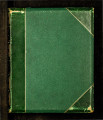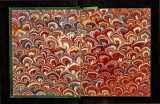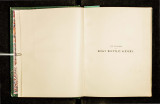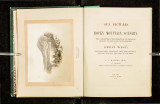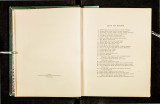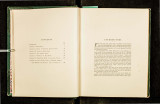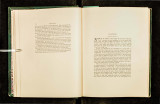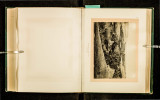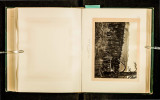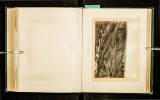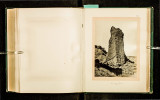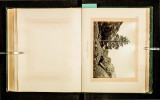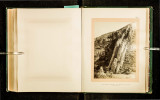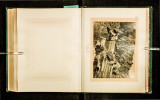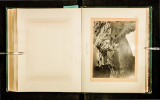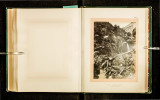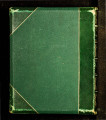| OCR Text |
Show {)() RO KY MOUNTArN S J~NJmY. vn.tion, that it may p rhaps indi cat~ approximately the nature or the bird to whi h it belonged. ' My coil ction of fo ·il fi sltes from thrs slmlcs wa very largo, an(l 111y ucc s was mostly due to the kind aid of Mr. A. \V. liillianl, a gent! >man of intr lligl'ne ', who ·up 'rintrncll'd tltc excavation on the lino of the railroad, and J)l''. PrvNL from time to tim sn ·h ·p 'cim ns of ralue a::; came in hi way. Prof<' ·or E. D. Uope, th eli. Lin"tli ·h<'d <·omparati v(' anatomi, t of Philad<>lphia, has kindly prer ar 'd the followin o· ae ·ount of the p trified-fi h rr ntni m.;, whi ch were r:;ubmittcd to him for examination, l'Sprcially for thi work: " '!'he fi ilC'S pln ccd in my ltrtnd ·by yon for dPtenninat ion, consiHt of four spPcic's, viz. : one ilcan /lwpterygian, Asineops qnam(j'ron, Uo1w, and three Jfalacopter;;.r;ians, Glttpea kwnilis, L vidy, lnpea pnsit!rr,, Cop , ancl Gyp1·inoclon lenalus, Cope. Those nantl'd by tl1 writer wPro not pr<'viou ·ly knowu, and the Asinoops repr' <'11tH al ·o a g<'nus not bPf'ore brotwht to the noti cl' of sciPntific m<"n. In ordinary lang nag ', tit ' la ;.;t nwntionPd fi ·It i a p rch, but in no dt'oTce similar t th ' whit' and yel low J1E'rch brorwht to our market·. The nl'aJ·e t n' em blanc in geneml slrueture i to be found in the b la ·k ba · of tlw Ohio and T ' nJw- <'O Ri Vl'l'H, bnt a clo er : imilarity in f'orm Pxi ts in tlw reel - y , OJ' goggl -<'yed pereh of we tem and so uth ('rn ri Vl' rs, tl1 ' Am bl opl i tes of natuml iHts. Zoologi!': tlly, it i not very IH'tuly rPlat(•d to either, for it combines wiLlt '0 111 ' of their ch amct!~ rs, oth(' l' now only xi :;ting in marin 1i r:; lt 'S, of oth 'I' f':tnli Ji ' . It is an aben:wt form of tho family of Cltmtodon , which embmces ma1·in fi she only, and whi<'h chidly abound at the pre ·ent tin1' in tiu' Tndian and Pacifi · Oct>an ·. B ut the form and proportion of its fins and seal' rrmin 1 one very much of tlte ·wamp and t iel '-wat ' J' sun p ' rch ol' N w Jer ey, Acantltarcltus pomotis, Baird, (lh·yU1ts Lp., tc.,) and sugge t a imilal'ity of habi t. Th ' teeth are fine and th ' d(mti t ion bru sh-liJ - , as in many fresh water and ma1·ine perch, and its food wa probably mueh lik theirs. As far as zoolorr ical cvidenee goes, thor is nothing to indi cate whether this spcci s belon rr<:d to frr h ot· ·alt water; its unannp l ch::mwtt'l' con titutcs a peculiarity much more prevalent among fp ·It water than marine fi he , while its zoological affinities ·o fa1· as k.nown are altogether with ma1·ine forms. In ·ize Uti Ji h 'Xceed ~a the red-ey e, and was l ess than the b.lack ba , averaging about that of the y llow p rch. "The Clupeas are heJTings of small speci s, consid rably small >r than the herring of our coasts. WE TWA lW TO HEA I{ Rl V J ~ H. !)7 ''On of the block s contains tlw I'C'maim; of two -mall slloal ' or lh t> fry, probably f lupl':t hnmi]is, whi cl1 w<'l'.<' caught ·udd('J.Jiy by. a. rdidt' or rail of calcan'OU mud, and <>ntomlwcl for tho ob;.;ervatJOIJ of futun· tudPnts. Til 'Y 111ust have bl~('ll takl'IJ 1111awarP;.;, sin e<' llwy li <' with l11t>ir 11 ad. all in OJW ]ir 'clion a they Hwam in ·lo;.;t' hodit• ·. On<' or two Jnay lJavc had a liiOlll l'll t's warnin o· of tll t' cataHti'Ol >h •, as till'.)' ll :tvl' t ni'IJP<l a li ttk asidP, bu t l h(•y ar ' tl1 exeeptionfl. 'I'll • fry are fro111 OIJ (•-ilalf to thn'<'-<lU[LI'tl'l'H fan in h. long antl Uj)Wrtl'llfl. • True hl'ITing, or tho ·o wilil tedh, ar dlir fly marin<', but tiH'Y 1'1111 into fn• -h wate1·s and dq)o ·it t ll('ir ::;pawn in thP Hpring of' lil(' j'<'ttl', :tiHl tlH' II return to salt watl' rS. 'I']Jo young run down to th<' ,'('a in anllllllll and n'main t here till old eno11gl1 to ·pawn. Tho Hizt• of til l' fry of' t II (' ]tock y Mountain lH' JTing .indil'ate t lmt th<'Y had not long lt> f't tlw Sl >awning rrround, whilv tlto abundance of adult~:; ·ugg<'Hl · th('y Wl'n' not far f'ro111 sal t water, tlwir nativ ekm ·ut. To lll•li evl' tlt l' ll, lh:tt the lo<'a lity fron1 whi ·h th specimr n · wer tnk en wa ' 11 itlw1· ftLI' from f'r ' ·h, nor far f'rolll alt wat0rs, i r:; r f:'a·onabl '; and thi · point · to a tid t', or bmel· i :,.:h inl t·t or riv r. La ·tl y, th' ·p' ·i • of 'yprino lon inhabi t al·o tidt' and l>ra('ki ·h watpr . Mo-t of th ' sp' il' of til ' famil y, fLS \Vl'll of t iH' genus, al'<' inhabita, nts of fr<' h water; b nt th y gE> rte ra.ll y, <' p 'c ially lho 'yprinodons pmprr, pr'fcr still and rrll1c1cly lo ali ti '·,and of't('ll occur in watt'!' re:tlly ~:;a l t. This habitat di r:;tingui slu.> them e 'P' ·ially from yprinida ' (1\LiJlnowH and ' uck (' l' ) 1wd Pike. '' Til, mat('rials which compo e th ' lml <:s indi ·at qui et watl' l', and not such a::; is ui'i ually s~ Ir ·tecl by lH'tTing for ·pawning in ; wltil ' tht' abumlan·o of adult lup ,as iucli ·ate· the proxi1nity of Sltlt watt' r. " This i · far from a sati factory dP IH O n ~:;tration of the natur ' of thP water which d<'pO it 'cl this ma s of ·ha,l • ·, l>ut is the be-t that <'an b' obtainl'd with uch a rn arrre r 'Pl'l'S<'ntation f p' ·jp . "A· to g~'o i on· ieal a""' the indi cation - arc mther more sati ·f'actory. 0 ' 'l'h' rrcnns lupca ran rr> from th' upper Eo '<'11 ' upward , b>ing ab undant in tiP slates of' Lebanon and Monta Bol ca, while Cyprinoclon lms b<"ll found in ncithe1·, but j·irst appears in til ' Middle or Lower Mioce 110 in Eu1·ope. Th Asin, ps r emblc v 'ry clo ely, and I believe <'H · ntially, the Py""oaus or Agas ·iz, of Eo 'l' rt a""e, from M nta 1 ol ea. The peculi m ·iti 'S I rc · 'nted by the o·f:'nn · found by Dr. Hayden, are of' ~:; u c lt smnll significance as to l ead me to clou bt tiL , b 'd in q u '::>tion beil1"" or later than 14 |


